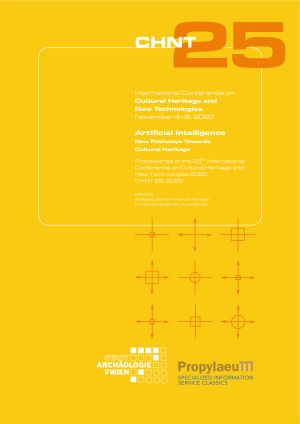
How to Cite
License

This work is licensed under a Creative Commons Attribution-NonCommercial-NoDerivatives 3.0 Unported License.
Published
Downloads
Artificial Intelligence
New Pathways Towards Cultural Heritage
The 25th international Conference on Cultural Heritage and New Technologies took place in 2020 in the city hall of Vienna under the headline “Artificial Intelligence – New Pathways Towards Cultural Heritage”.
The contributions deal with the application of computational approaches in all fields of cultural heritage, with a special emphasis on the utilisation of “Artificial Intelligence”. The topics include Remote Sensing, Data Acquisition and Modelling, and Methods for the analysis and presentation of digital data in archaeology and cultural heritage. The volume also contains Abstracts on the round table discussions held and the posters presented at the conference and a special session which was dedicated towards the 25th anniversary of the conference.






